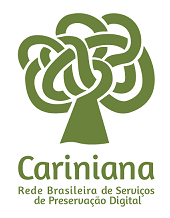Efeito de diferentes volumosos conservados na forma de silagem sobre a ingestão de alimentos e produção de leite de vacas em lactação
DOI:
https://doi.org/10.5433/1679-0359.2003v24n1p103Palavras-chave:
Consumo, Silagem de azevém, Silagem de cevada, Silagem de milho.Resumo
O objetivo do presente estudo foi avaliar o efeito de diferentes volumosos conservados na forma de silagem sobre os consumos de matéria seca, proteína bruta, matéria orgânica, extrato etéreo, fibra em detergente neutro, carboidratos totais e carboidratos não estruturais, e produção e composição do leite. Foram utilizadas 12 vacas Holandesas em lactação com produção média de 30 kg de leite, alimentadas com três dietas compostas pela combinação de forragem mais concentrado, a saber: (T1) 50% de silagem de milho + 25% de silagem de azevém + 25% de silagem de cevada, (T2) 50% de silagem de azevém + 25% de silagem de milho + 25% de silagem de cevada e (T3) 50% de silagem de cevada + 25% de silagem de milho + 25% de silagem de azevém. Utilizou-se delineamento em quadrado latino 3 x 3 com período extra. Os consumos de matéria seca, matéria orgânica, extrato etéreo e fibra em detergente neutro não foram influenciados pelas combinações das fontes de volumosos usados. Entretanto, o consumo de proteína bruta foi maior nos animais alimentados com a dieta 2 (T2) constituída de 50% de silagem de azevém + 25% de silagem de milho + 25% de silagem de cevada. A produção de leite corrigida, ou não, para 3,5% de gordura; os teores de gordura e proteína, bem como a eficiência alimentar (kg de leite/ kg de MS ingerida) não foram influenciadas pelas dietas experimentais.
Downloads
Downloads
Publicado
Como Citar
Edição
Seção
Licença
Semina: Ciências Agrárias adota para suas publicações a licença CC-BY-NC, sendo os direitos autorais do autor, em casos de republicação recomendamos aos autores a indicação de primeira publicação nesta revista.
Esta licença permite copiar e redistribuir o material em qualquer meio ou formato, remixar, transformar e desenvolver o material, desde que não seja para fins comerciais. E deve-se atribuir o devido crédito ao criador.
As opiniões emitidas pelos autores dos artigos são de sua exclusiva responsabilidade.
A revista se reserva o direito de efetuar, nos originais, alterações de ordem normativa, ortográfica e gramatical, com vistas a manter o padrão culto da língua e a credibilidade do veículo. Respeitará, no entanto, o estilo de escrever dos autores. Alterações, correções ou sugestões de ordem conceitual serão encaminhadas aos autores, quando necessário.















